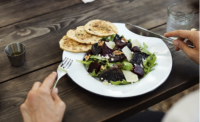Neuroscience up, convenience down among packaging trends at Campbell Soup
by Rick Lingle, Executive Editor
Neuroscience will be useful as a packaging development tool, but convenience is diminishing in prominence, a packaging executive of Campbell Soup said March 3 during the Packaging Strategies Package Design & Development (PDD) Summit.
“We are evaluating packaging through a consumer value lens,” declared Asad Hamid, Campbell’s VP of global strategies, at the three-day event in Tampa, Fla. He noted that consumers, during the economic downturn, are adopting a back-to-basics mindset. “It’s a struggle for normalcy that is transforming consumers’ behavior,” Hamid noted. “This will stay around for several years. “
"Private label is on fire,” he emphasized, pointing to findings that 58% more people are now buying store brands.
Another trend is wellness. “We are eating our way to better health,” he remarked. As a result, the company has adopted strategies such as using color to build wellness cues into packaging for V8 beverages.
One development he mentioned reflects a convergence of both of these trends: Walmart has introduced a private-label brand-the name of which translates roughly as “Eating Well”-in Brazil. “What does this mean for brand owners if Walmart brings this concept to the U.S.?” he asked.
Multi-serve formats can meet consumers’ desire for higher value products, Hamid said. He also noted a counter-trend: premium-priced segments were experiencing growth through the downturn.
Convenience no longer king?
Convenience has been a major driver in consumer packaging for years, but Hamid sees it as a lower priority coming out of the recession. “We’ve seen a plateau or decline” in convenience as a driver, Hamid offered. “Convenience is a secondary benefit.”
He also mentioned the forthcoming redesign of Campbell’s iconic red-and-white soup can label, which has created a buzz in advance of its planned release this summer. “We had to do something [with the label],” he said. Campbell’s used neuroscientific measurement of consumers’ emotional responses to evaluate options for the new design. Hamid said Campbell’s is one of the first consumer goods companies to use this technique.
Other recession-driven, economically minded trends the company is tapping include cooking at home and lunch at work. “It’s all about the consumer experience,” Hamid said. In Europe, the company has moved into dry “meals in a cup” as an extension of dry “soups in a cup” products.
Projects in Campbell’s pipeline center on lightweighting and improving systems efficiency. “That may even mean accepting higher material costs in order to reduce total system costs,” Hamid noted.
“We are evaluating packaging through a consumer value lens,” declared Asad Hamid, Campbell’s VP of global strategies, at the three-day event in Tampa, Fla. He noted that consumers, during the economic downturn, are adopting a back-to-basics mindset. “It’s a struggle for normalcy that is transforming consumers’ behavior,” Hamid noted. “This will stay around for several years. “
"Private label is on fire,” he emphasized, pointing to findings that 58% more people are now buying store brands.
Another trend is wellness. “We are eating our way to better health,” he remarked. As a result, the company has adopted strategies such as using color to build wellness cues into packaging for V8 beverages.
One development he mentioned reflects a convergence of both of these trends: Walmart has introduced a private-label brand-the name of which translates roughly as “Eating Well”-in Brazil. “What does this mean for brand owners if Walmart brings this concept to the U.S.?” he asked.
Multi-serve formats can meet consumers’ desire for higher value products, Hamid said. He also noted a counter-trend: premium-priced segments were experiencing growth through the downturn.
Convenience no longer king?
Convenience has been a major driver in consumer packaging for years, but Hamid sees it as a lower priority coming out of the recession. “We’ve seen a plateau or decline” in convenience as a driver, Hamid offered. “Convenience is a secondary benefit.”
He also mentioned the forthcoming redesign of Campbell’s iconic red-and-white soup can label, which has created a buzz in advance of its planned release this summer. “We had to do something [with the label],” he said. Campbell’s used neuroscientific measurement of consumers’ emotional responses to evaluate options for the new design. Hamid said Campbell’s is one of the first consumer goods companies to use this technique.
Other recession-driven, economically minded trends the company is tapping include cooking at home and lunch at work. “It’s all about the consumer experience,” Hamid said. In Europe, the company has moved into dry “meals in a cup” as an extension of dry “soups in a cup” products.
Projects in Campbell’s pipeline center on lightweighting and improving systems efficiency. “That may even mean accepting higher material costs in order to reduce total system costs,” Hamid noted.
Looking for a reprint of this article?
From high-res PDFs to custom plaques, order your copy today!





